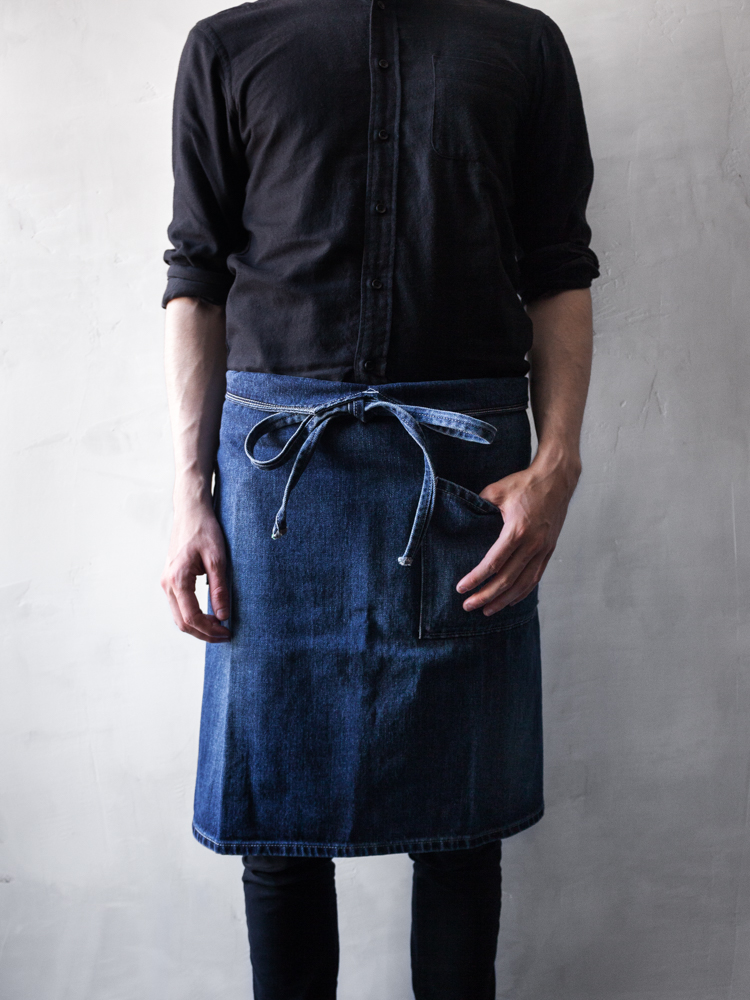Blue Persuasion: A Brief Primer on Japanese Denim
It's hard to think of a garment or textile that has made a bigger impact on the contemporary fashion zeitgeist than denim. This simple, sturdy, and long-wearing staple has been the banner for countless cultures and countercultures that have donned it for the explicit purpose of getting their hands dirty and looking good while doing so. Today, denim is en vogue the world over (despite the usual ebbs and flows in popularity) and mass production and fast fashion have created a race to the bottom in terms denim quality. In Japan, however, the opposite is true.
With its strong ties to Americana and workwear, many people are surprised to find that Japan produces some of the most desirable denim in the world. For those that are unconvinced, a visit to any of Japan’s fashion-forward districts will reveal an entire tribe of Americana aficionados clad in vintage American workwear you’d be hard-pressed to find in The States (collectors in Japan own over 70% of America’s vintage denim) . A reverence for tradition, an eye for quality, and a rich history of textile excellence all converge to make Japanese denim a cut above the rest. Read on to learn what sets it apart.
History
Denim’s origin can be traced back to influential traders and weavers in Nîmes, France that were trying to replicate an exceptionally strong fabric from Italy called serge. Serge is a type of twill with diagonal ridges in a two-up two-down weave. The word denim is thought to come from “serge de Nîmes”, that is, serge from the town of Nîmes, France.
For all intents and purposes, however, the history of denim really begins in California where a Bavarian immigrant named Levi Strauss arrived in 1853 and began producing denim for the prospectors that were coming from far and wide to seek fortunes during the gold rush. Since then, denim has steadily grown in popularity thanks in part to the influencers of their time (see James Dean, Elvis Presley, John Wayne, Marlon Brando, and Marilyn Monroe, to name a few).
Okayama
To understand Japanese denim, one must understand the history of Okayama. Okayama, on Japan’s western coast, is considered by most to be the birthplace of Japanese denim and it continues to be the main denim producing region in Japan. In 1967, post-war demand for trendy American jeans exploded, and the mills of Okayama began producing denim while cotton was in short supply. Big John, (who holds the contentious title of being the first denim producer in Japan, and who is still producing to this day) set up shop and set off a wave of denim production through the 70s and 80s. Okayama was one of only a few cotton-producing regions in Japan, and this, combined with a regional tradition of indigo dyeing and weaving, made Okayama uniquely positioned to become home to this emerging industry.
Today, thanks to a revitalization project led by Japan Blue Group, a street off Kojima’s downtown district was transformed into a denimhead’s paradise. This street, known as “Jeans Street”, houses shops for each of the local Okayama brands, as well as a denim museum and a cafe that serves denim-colored blueberry ice cream. A special denim-themed tour bus takes enthusiasts along Jeans Street, which is even lined with a red and white line that references the tell-tale detail found on selvedge jeans.
The Japanese Difference
In today’s denim circles, Japanese denim has a reputation for being some of the most sought-after textiles in the world. Every step in the denim producing process, from dyeing to weaving, helps to separate Japanese denim from the rest.
Dyeing
Japan has a long history of textile dating (see katazome, tsutsugaki, shibori, yuzen, and kasuri to name a few). By combining and modifying elements of each of these dyeing techniques, Japanese denim producers are able to create textiles that fade in unique ways and produce variations in color that are not often seen in western denim. It’s this willingness to experiment and unique aging properties that attracts and converts many denim fans.
Looms
One of the key differences between Japanese denim and other cheaper alternatives is that, for the most part, it is woven on older shuttle looms. These looms, like the fabled Toyoda looms that are used to produce certain styles in our line of towels, are much slower and less accurate than their modern counterparts. While this might seem like an undesirable or inefficient process, it actually results in fabric that has subtle variations and imperfections which many denim aficionados find desirable.
Weight
Denim’s heft plays an important role in its longevity. Generally thicker and heavier than other fabrics, it is typically found in weights between 11 oz and 14 oz, but it’s not uncommon to find Japanese denim that weighs much more. In fact, there are some noteworthy producers that create denim that stands straight up on its own. While other denim manufacturers focus their attention on producing thinner, more comfortable (and ultimately less sturdy) denim, the Japanese commitment to heavyweight fabrics sets them apart.
Selvedge
Though not always a marker of quality, selvedge (or ‘self-edge’) is the tightly woven band that is sometimes found on both edges of a piece of denim fabric. The purpose of a selvedge edge is to prevent the fabric from unraveling and giving a clean, finished look.
While all of these processes add up to make Japanese denim unique, with all of the options available today, there is something available for every style. Today’s denim market is filled with Japanese denim that is pushing the envelope of this practical staple. With a bit of research, you’ll be sure to find a pair that will age as gracefully as you do.
WORDS BY SAMUEL GEAN





